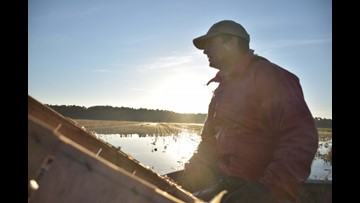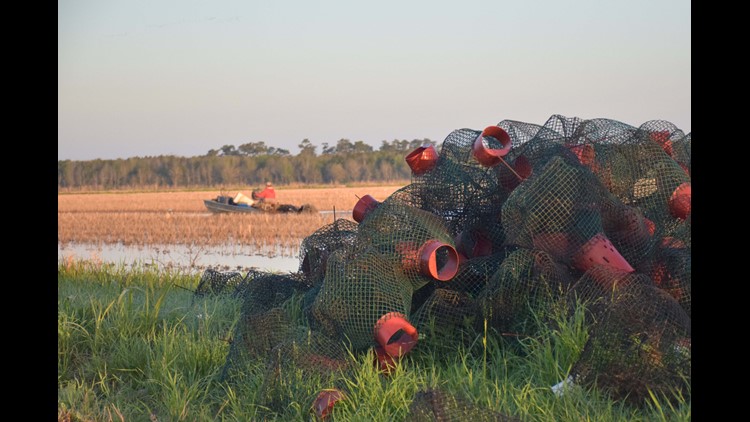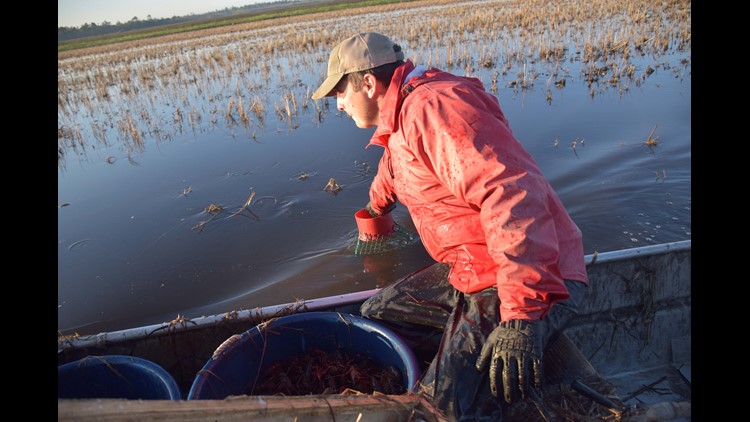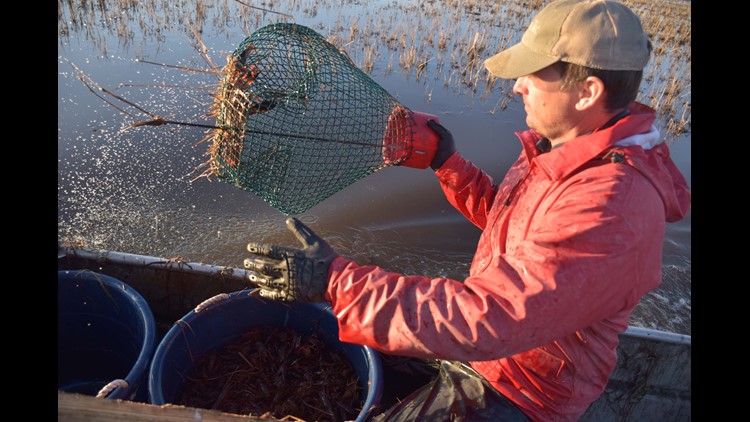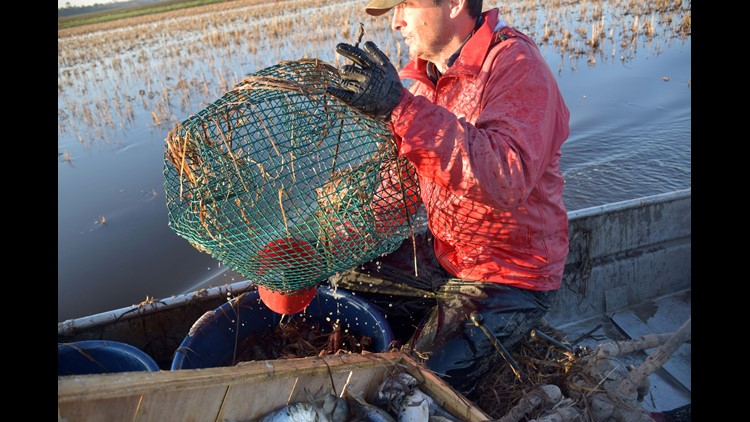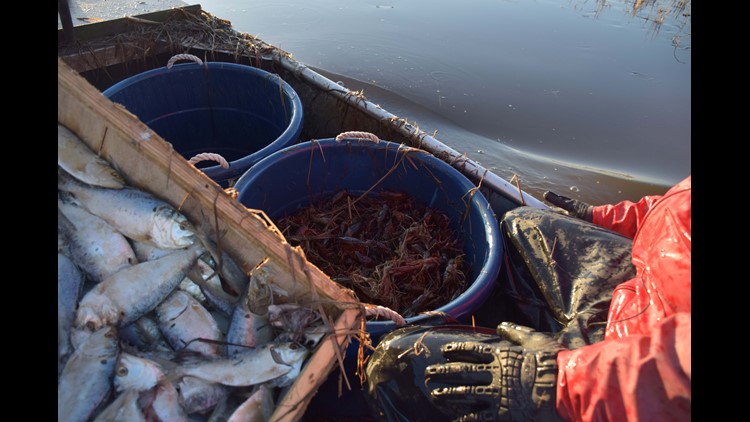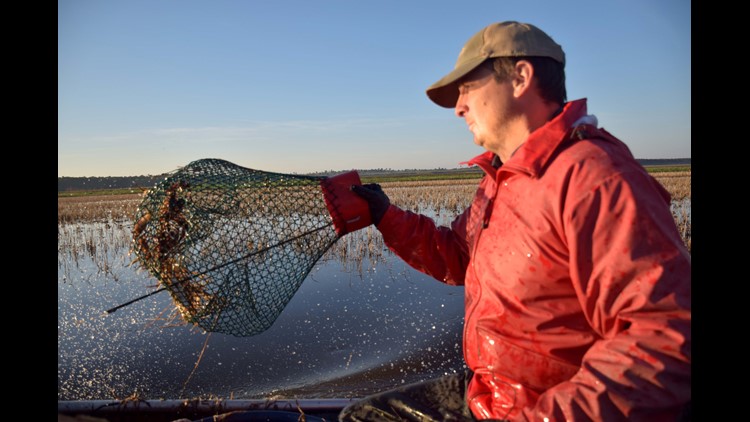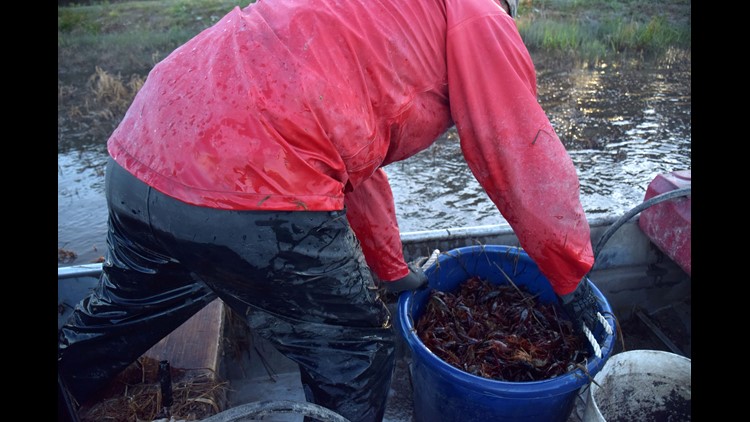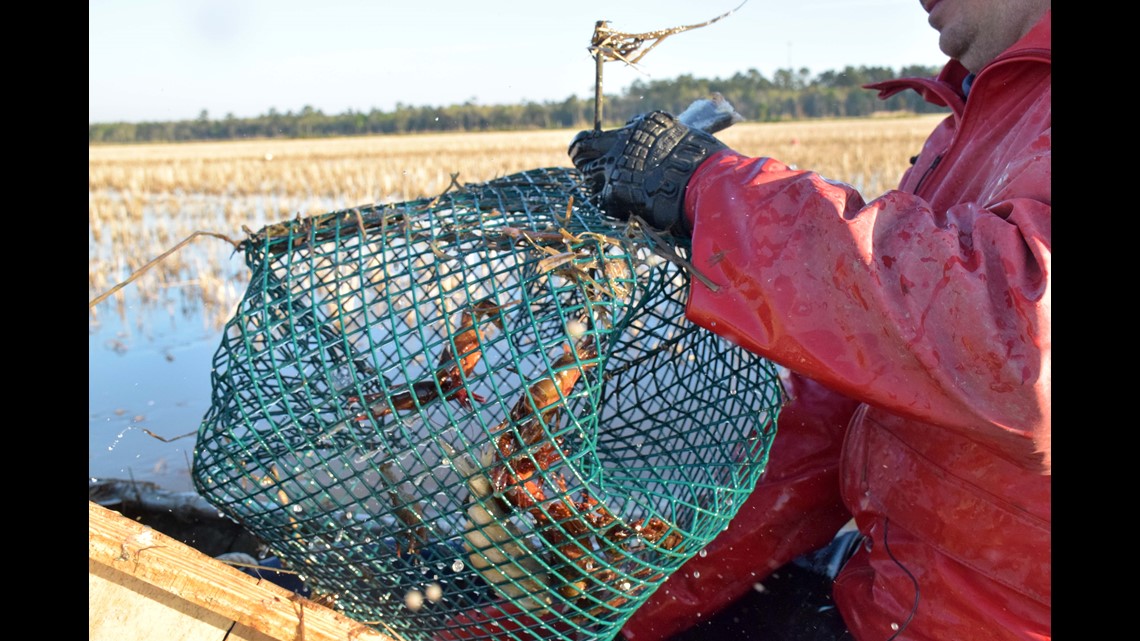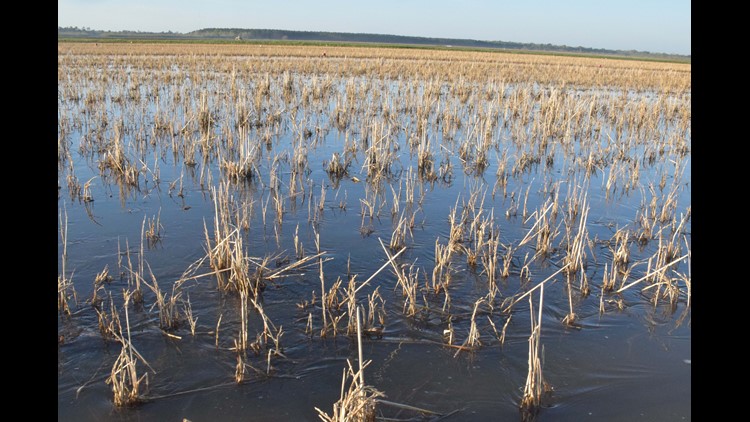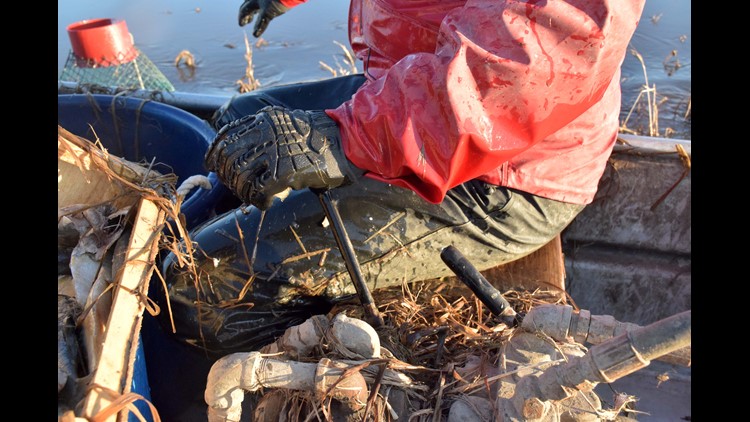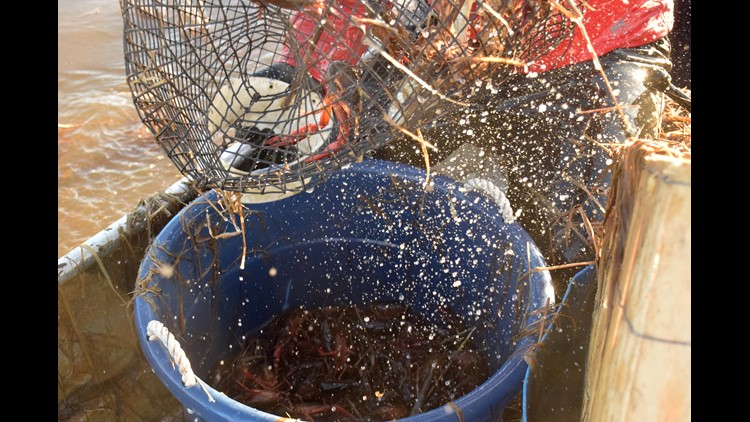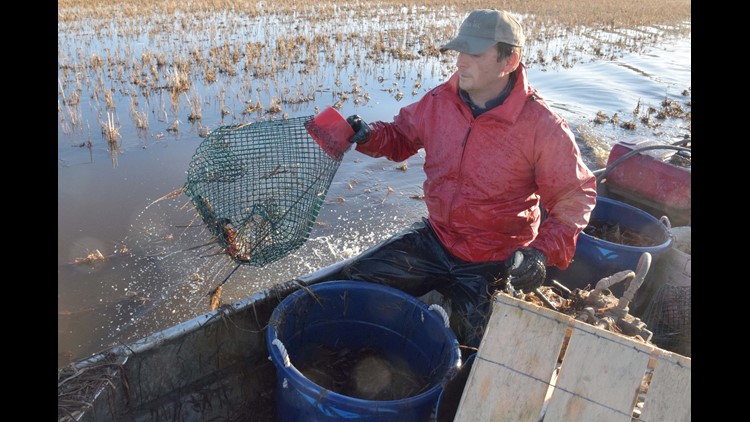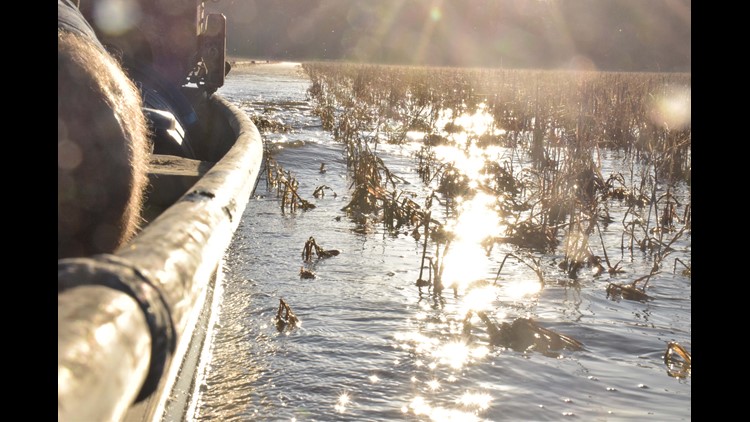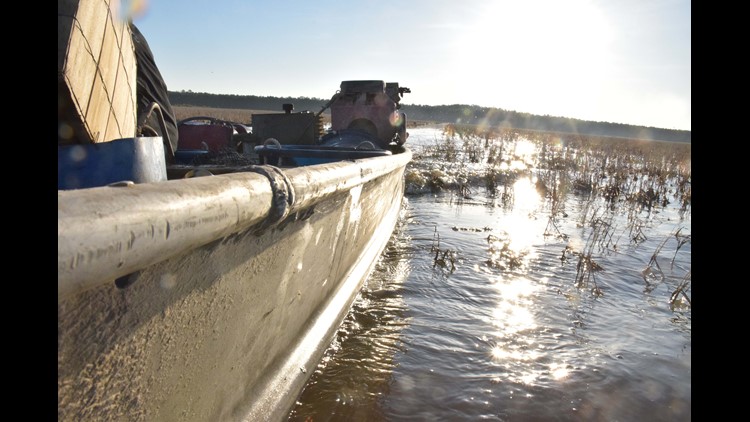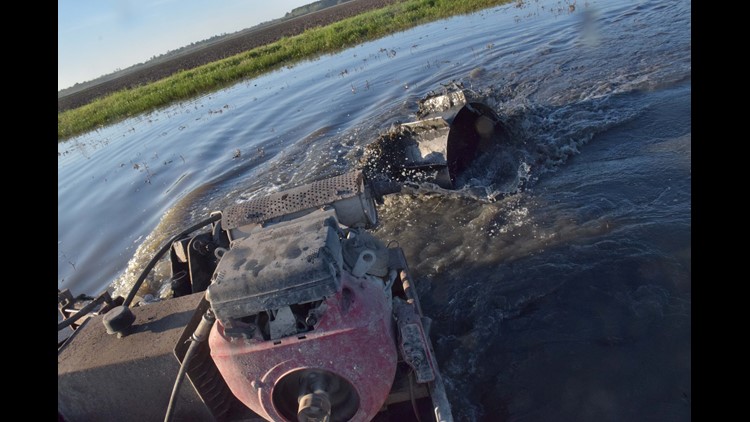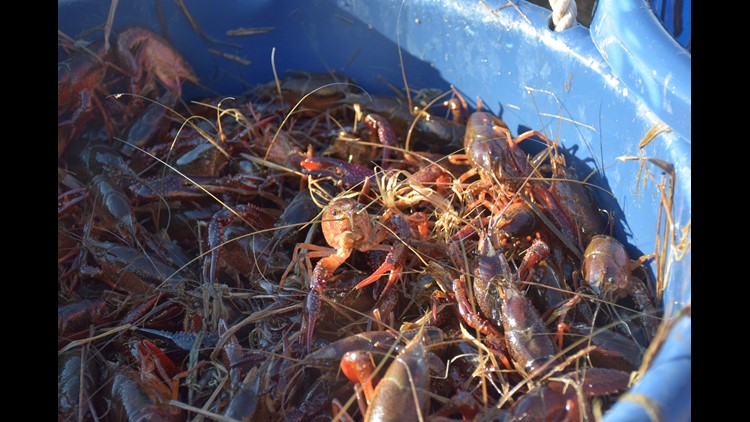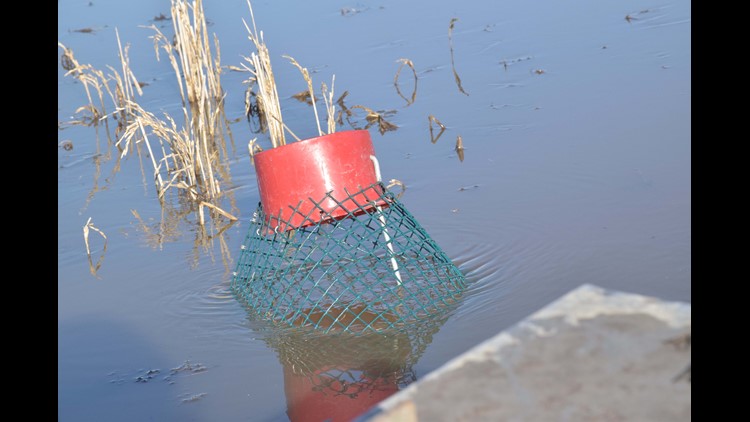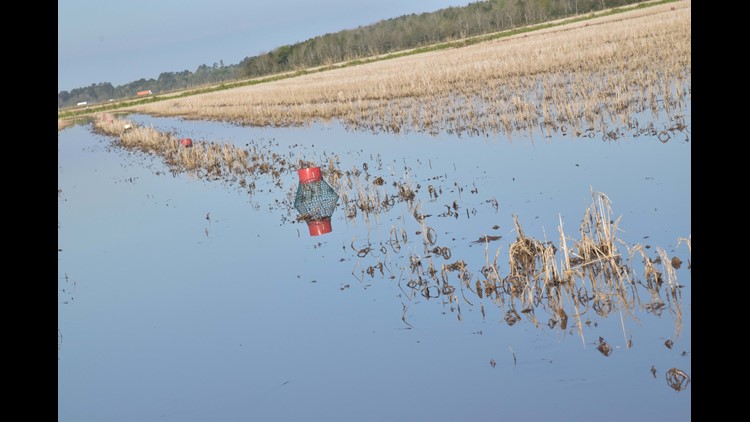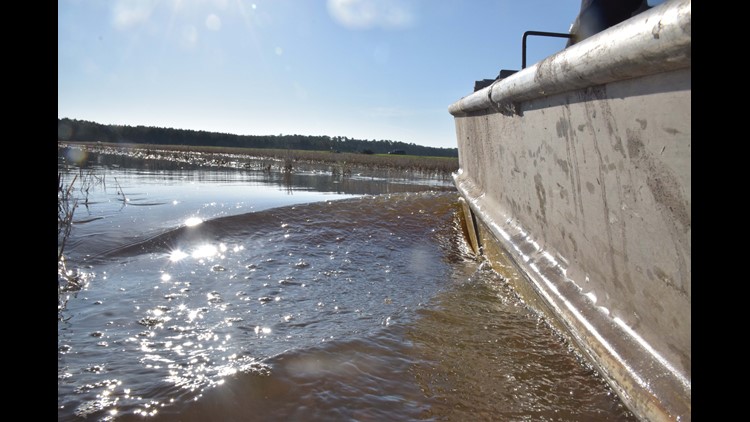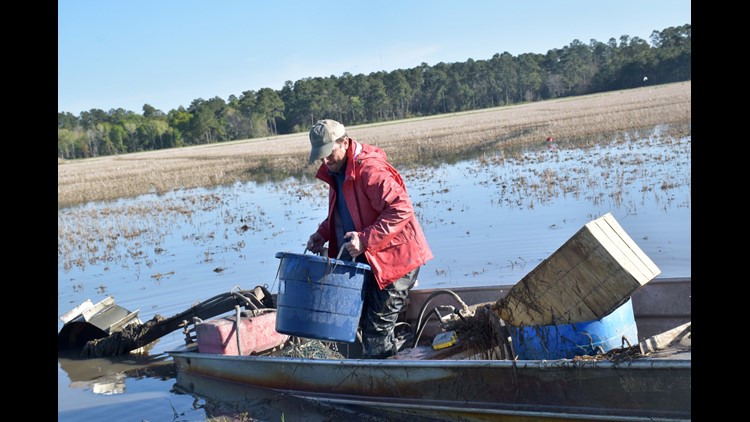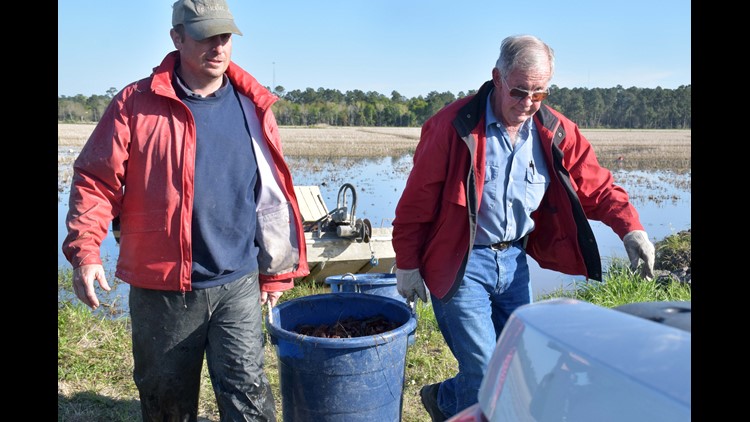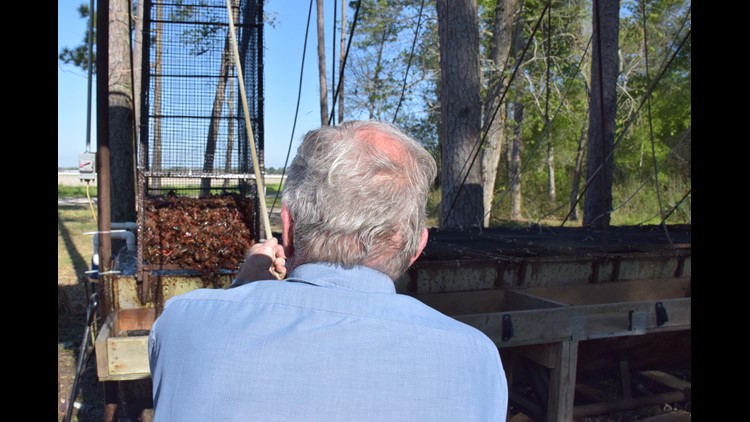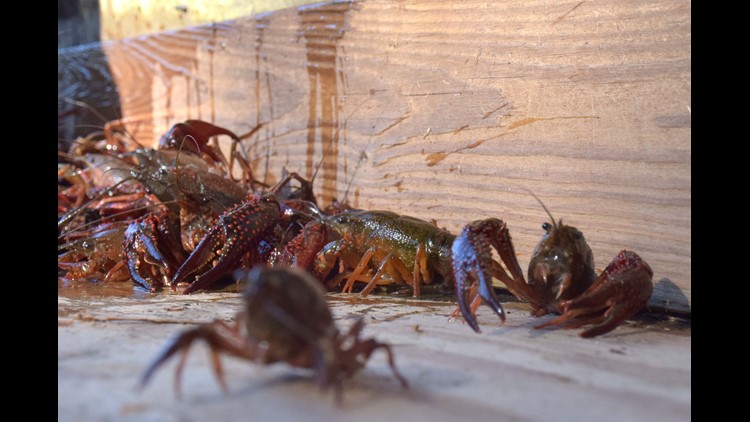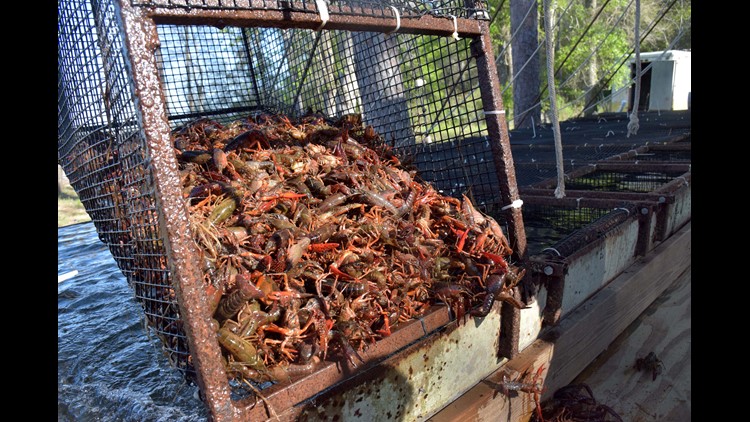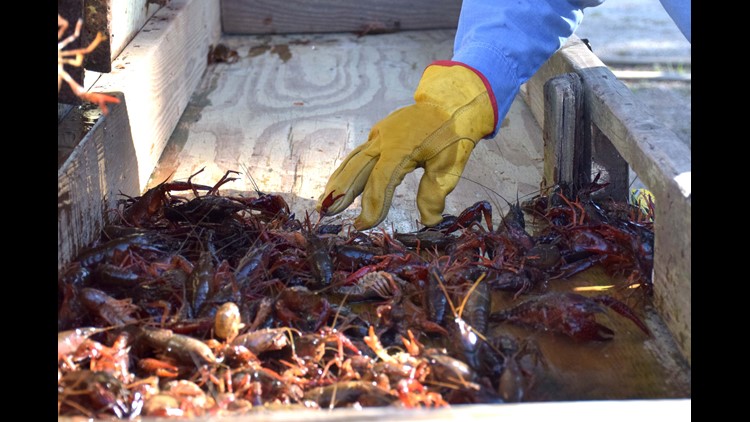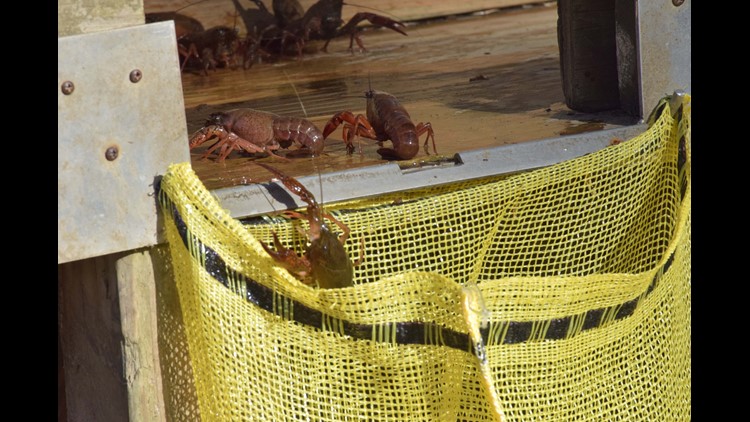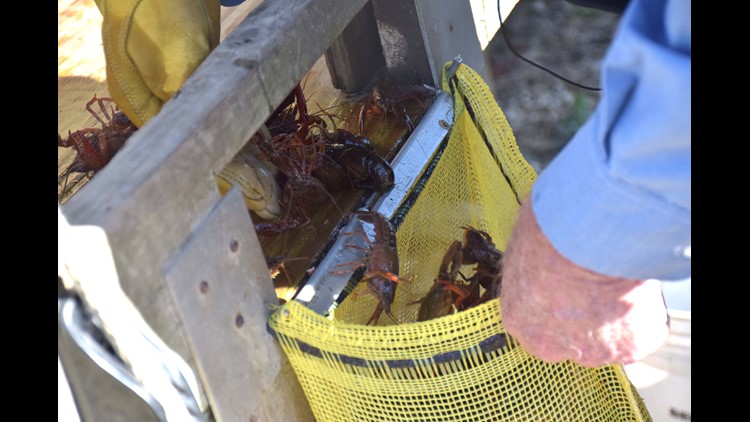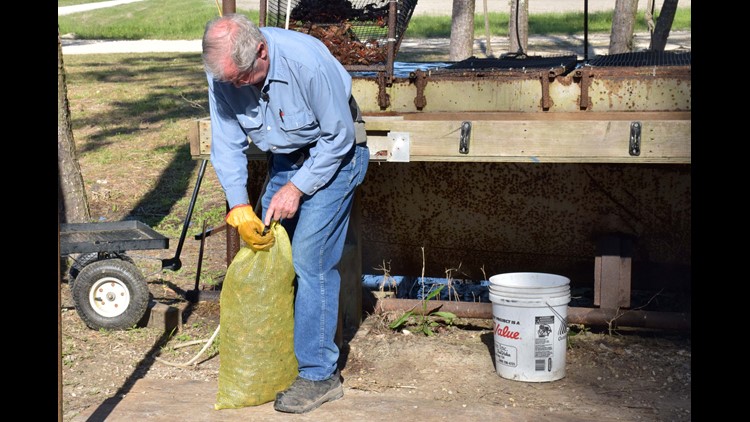The loud hum of an engine cuts through the quiet farmland as Alan Gaulding navigates his flat-bottom boat through his family’s flooded rice fields. A cool breeze blows across his face as the sleepy sun slowly climbs above the treetops, cutting through the morning mist rising off the water. Alan, 44, sits alone in his boat, a captain navigating through 80 acres harvesting crawfish.
This time of year, the harvest is good.
It’s mid-March, days before the calendar marks the official start of spring, but crawfish season is well underway, meaning it’s the beginning of a laborious four months for Alan and his father, John Gaulding, who own and run Southeast Texas Crawfish Farm near Beaumont.
The farm sits on some 1,900 acres with Interstate 10 splitting the land in half. The noise of 18-wheelers and cars and trucks is nearly non-existent as Alan traverses the terrain, a paddlewheel pushing the boat through the mud and shallow brown water. As Alan navigates each passageway, he pulls baskets from the water with crawfish trapped inside. The crawfish are lured with bait through three small holes, and once inside, there’s no getting out. Alan dumps each basket into a large bucket placed between his legs, which he then re-baits for the next day’s harvest.
It’s a monotonous job—drive, pull, dump, bait, repeat—that allows the Gauldings to cash in on what’s grown into a lucrative business in Southeast Texas.
Houstonians alone eat millions of pounds of crawfish each year, especially during the four-month stretch when crawfish season is at its peak. At BB’s Café in the Heights—one of hundreds of Houston-area restaurants that serve boiled crawfish—crawfish season is already underway, with guests lining tables during the lunch rush and on weekends devouring thousands of pounds of crawfish. During spring break week alone, the restaurant sold more than 58,000 pounds. During the 2017 season it sold nearly 900,000 pounds.
Depending on who you ask, the season runs from early February until early July. At Southeast Texas Crawfish Farm, the season runs from the first week in March until the second week in June. That’s when, John says, the crawfish are large enough that they’re ready to sell.
The season is short lived because the Texas summers are too hot and the heat sucks out all the oxygen in the water and warms temperatures to the point that would kill the crawfish. So instead they burrow deep down into the mud until they find cooler temperatures and moisture, says Dan Johnson, a leading expert on Texas Crawfish. The red swamp crawfish, which people eat, can live underground for months at a time and survive off their fat reserves, Johnson says, though they’ll often resurface after a summer storm cools the surface to eat.
To get the crawfish from pond to table, Alan starts his days on the boat at 7 a.m., often leaving home before his children are up for school. He pulls his truck onto Bill Gaulding Road, named after his grandfather, grabs a bucket of bait and hitches the boat to his truck before making a two-mile drive to the field. It takes about three hours to make his rounds, pulling some 700 baskets and harvesting upwards of 1,000 pounds of crawfish per day.
Photos: The Crawfish Farmers
Photos: Meet the crawfish farmers
Some days he’s met with clear skies and a beautiful sunrise (those are the days he likes the most); others are filled with dreary dark clouds and cold rain that bounces off his red jacket and gray pants. Either way, rain or shine, the job has to get done; there are always orders to fill.
Once his morning round is complete, he loads the buckets filled with angry crawfish into his father’s truck, which are taken to purging tanks on the other side of the farm. There, the crawfish are dumped into clean running water that washes off the dirt and grit and allows them to clean out their insides, too. After at least an hour in the purging tanks, John empties each tank and bags the crawfish in bright yellow sacks—making sure to remove the ones that are dead or too small.
Because the farm goes through the extra step of purging, the Gauldings sell their crawfish at a higher price—between 30-50 cents more per pound than non-purged crawfish, John says—which keeps them mostly out of the restaurant industry (John says most restaurants rather purge the crawfish themselves.) So the farm focuses mainly on selling directly to individuals, many who are willing to make the hour-plus drive from Houston.
Neither Alan nor John ever imagined they’d be in the crawfish business, but as farmers you have to be open to anything. For years, John farmed rice (still does) and experimented with growing other crops—wheat (of which the humidity and rain make it susceptible to diseases) and soybeans (excessive rainfall, which Southeast Texas is prone to, drowns the plants).
In 1990, a man approached John about leasing some land in his rice fields and farming crawfish. The man spent four years doing so, but through what John calls a lot of mismanagement, John kicked them off his land and kept their equipment as payment. He’s been in the crawfish business ever since.
Alan spent his childhood helping his father on the farm and knew one day he wanted to work there, but one of two boys, John told them the farm couldn’t support three families and stressed they each get an education. So Alan got a mechanical engineering degree from Texas A&M and bounced around the cold climates of New York, Minnesota and Michigan before deciding to return in 2003.
“He took a vow of poverty and came home,” John says.
Alan doesn’t seem to mind the work. The morning sunrises are peaceful—better than a desk job—and the money is good. But more than that, he sees his job as an opportunity that allows people to create lifelong memories sitting around a table peeling tails and sucking heads.



